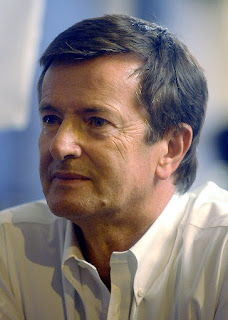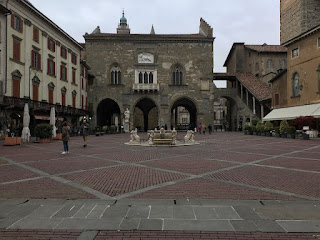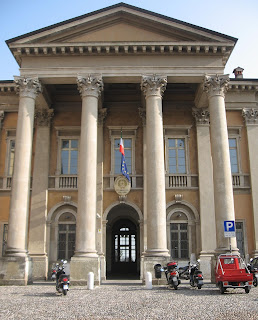Italy’s all-time top selling female artist
The pop singer Anna Maria Mazzini, better known simply as Mina, was born on this day in 1940 in the Lombardy city of Busto Arsizio. Since her debut single in 1958, Mina has sold well in excess of 150 million records, which makes her the top-selling female performer in Italian music history. Only her fellow 60s star Adriano Celentano can boast larger figures. The pair worked together on one of Italy’s biggest-selling albums of all-time in 1998. Mina Celentano sold an impressive 2.365 million copies. They revived the collaboration in 2016 with Tutte Le Migliori. Mina also enjoys an iconic status in the history of female emancipation in Italy as a result of the sensational ban imposed on her by the state television station RAI in 1963 following her affair with a married actor, Corrado Pani, by whom she became pregnant. Despite pressure from the Catholic Church, whose position as the guardians of Italy’s public morals was still very strong at the time, the broadcaster was forced by the weight of public opinion, as well as Mina’s unaffected record sales, to rescind the ban the following January. Read more…
____________________________________
Tina Anselmi - ground-breaking politician
Former partisan became Italy’s first female cabinet minister
The politician Tina Anselmi, who made history in 1976 as the first woman to hold a ministerial position in an Italian government and later broke new ground again when she was appointed to chair the public inquiry into the infamous Propaganda Due masonic lodge, was born on this day in 1927 in Castelfranco Veneto. Anselmi was chosen as Minister for Labour and Social Security and then Minister for Health in the government led by Giulio Andreotti from 1976 to 1979. In 1981, she became the first woman to lead a public inquiry in Italy when she was asked to head the commission looking into the clandestine and illegal P2 masonic lodge, which had among its members prominent journalists, members of parliament, industrialists, and military leaders and was suspected of involvement in many scandals in pursuit of an ultra-right agenda. Anselmi’s political views were heavily influenced by her upbringing in the Veneto during the years of Mussolini and war. She was from a comfortable background - her father was a pharmacist in Castelfranco Veneto, while her mother ran an osteria with her grandmother. Read more…
___________________________________
Saint Catherine of Siena
Pious woman from ordinary family helped the Pope reorganise the church
Caterina Benincasa, who was to one day become a patron saint of Rome, Italy and Europe, was born on this day in 1347 in Siena in Tuscany. She is remembered for her writings, all of which were dictated to scribes, as she did not learn to write until late in life. While carrying out Christ’s work in Italy, she wrote about 380 letters, 26 prayers, and four treatises of Il libro della divina dottrina, better known as The Dialogue. These works were so influential and highly regarded she was later declared a Doctor of the Church. Caterina was the youngest of 25 children born to Lapa Piagenti, the daughter of a poet, and Jacopo di Benincasa, a cloth dyer. She is said to have had her first vision of God when she was just five years old and at the age of seven, Caterina vowed to give her whole life to God. She refused to get married when her parents tried to arrange it, cut off her hair to make herself look less attractive and began to fast. She did not want to take a nun’s veil, but to live an active life full of prayer in society, following the model of the Dominicans. When she was in her early 20s, Caterina said she had experienced a spiritual espousal, or mystical marriage, to Christ. Read more…
_____________________________________
Francesco I - Grand Duke of Tuscany
Florentine ruler at heart of Medici murder mystery
Francesco I, the Medici Grand Duke whose death at the age of 46 became the subject of a murder mystery still unsolved 430 years later, was born on this day in 1541 in Florence. The second to be given the title Grand Duke of Tuscany, Francesco was the son of Cosimo I de' Medici, the first to hold the title, and Eleonor of Toledo. Like his father, Francesco was often a despotic leader, but while Cosimo's purpose was to maintain Florence's independence, Francesco's loyalties were not so clear. He taxed his subjects heavily but diverted large sums to the empires of Austria and Spain. He continued his father's patronage of the arts, supporting artists and building the Medici Theatre as well as founding the Accademia della Crusca and the Uffizi Gallery. He was also interested in chemistry and alchemy and spent many hours in his private laboratory. It was his personal life that he is remembered for, beginning with an unhappy marriage to Joanna of Austria, youngest daughter of Ferdinand I, Holy Roman Emperor and Anne of Bohemia and Hungary. Joanna was reportedly homesick for her native Austria, and Francesco was unfaithful from the start. Read more…
______________________________________
Veronica Franco – courtesan and poet
The literary talent of a popular prostitute
The beautiful courtesan, Veronica Franco, was born on this day in 1546 in Venice. A cortigiana onesta, literally 'honest courtesan', but really meaning intellectual and high class, Veronica is remembered for the quality of her poetry as well as her profession. In the 16th century Venice was renowned for the number of its courtesans and Veronica became one of the most famous of them. She had three brothers who were educated by tutors and fortunately her mother, a former cortigiana onesta herself, had ensured that Veronica shared that education. Veronica was married in her mid-teens to a physician, but she soon initiated divorce proceedings. She asked her husband to return her dowry but he refused, and with a young child to support, she had no choice but to become a courtesan. She was a great success and was able to support her family well for the next few years. By the time she was 20, Veronica was among the most popular and respected courtesans in Venice. Among her clients were King Henry III of France and Domenico Venier, a wealthy poet whose salon she joined. As a member of the Venetian literati, Veronica participated in discussions and contributed to collections of poetry. Read more…


.jpg)
.jpg)




.jpg)
.jpg)

.jpg)
.jpg)



.jpg)
%20(2).jpg)
